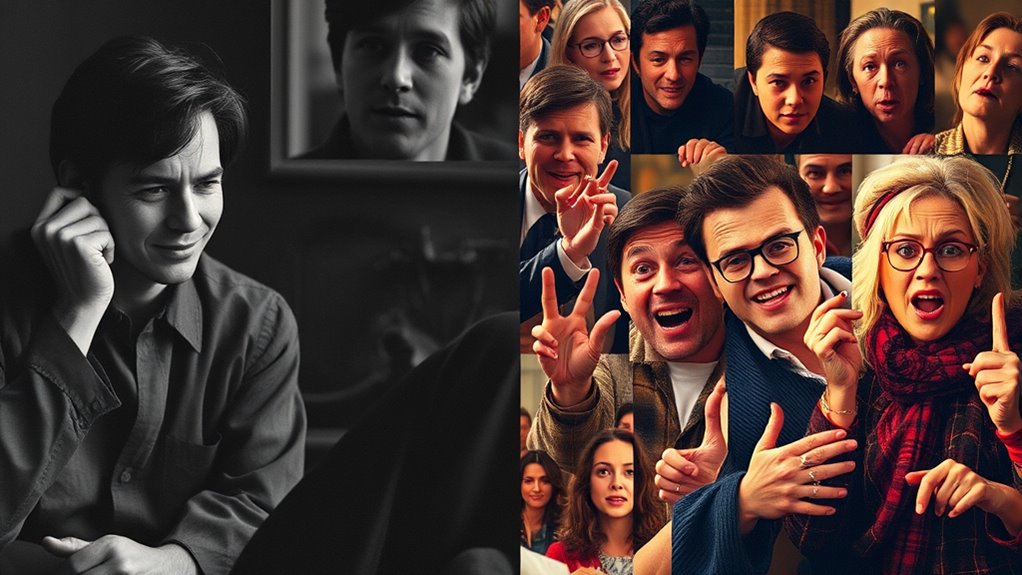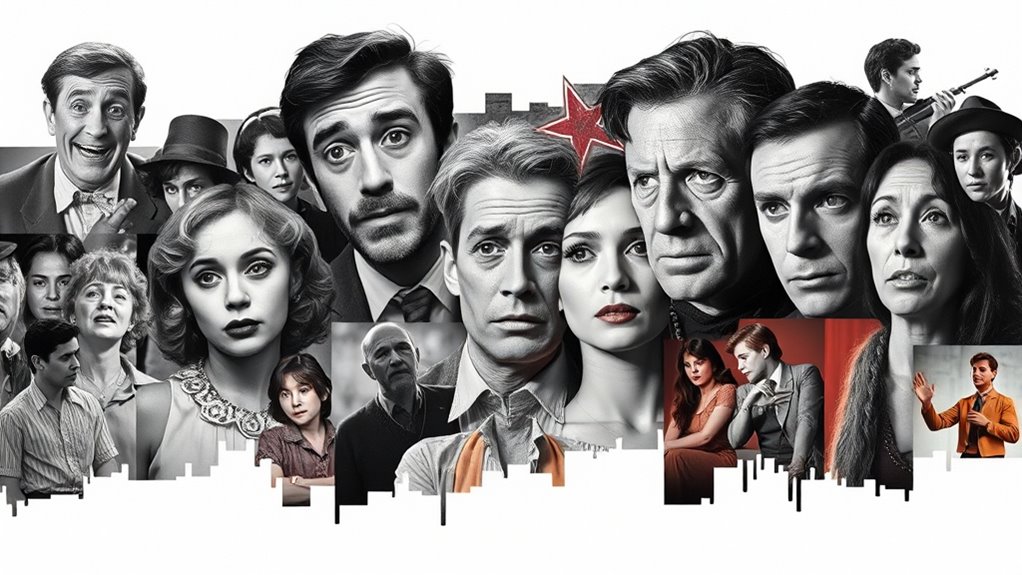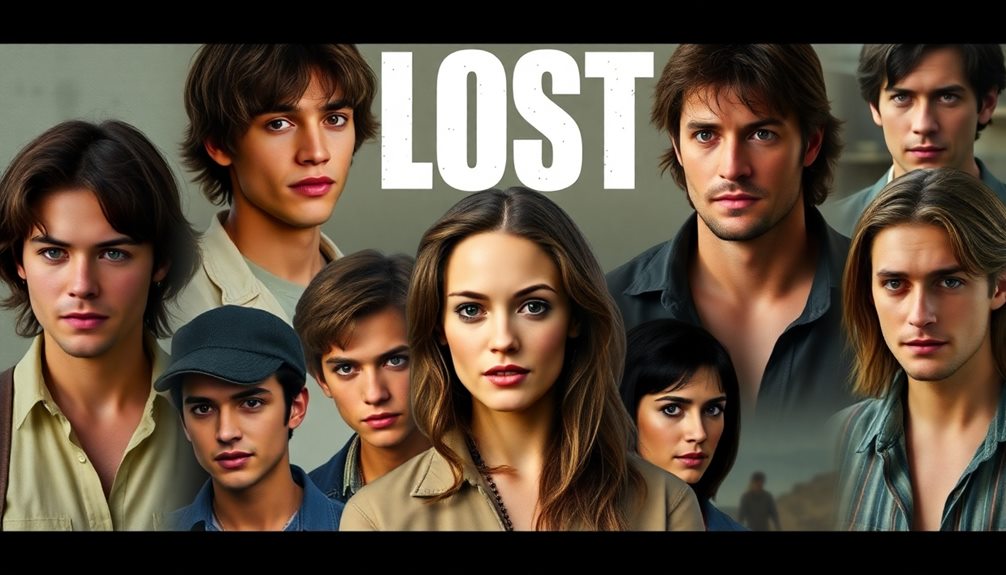Dramedy has evolved from clear-cut comedy or tragedy into a seamless blend that captures life’s emotional complexity. You’ll notice how creators now mix humorous and serious moments within scenes, reflecting real-life experiences more authentically. This shift allows stories to explore social issues and deep themes while balancing humor and sorrow. If you continue exploring, you’ll discover how this dynamic genre mirrors the messiness of modern life and keeps evolving to stay relevant.
Key Takeaways
- Early dramedy maintained clear distinctions between humor and tragedy, emphasizing consistent tonal boundaries.
- Creators progressively blended serious themes with witty dialogue, enabling seamless tone shifts within scenes.
- Modern dramedies utilize layered storytelling and abrupt tone changes to depict complex emotional experiences.
- The genre now tackles social issues like mental health and injustice, making themes more relatable through tone blending.
- Evolving storytelling techniques reflect real-life messiness, enhancing authenticity and relevance in contemporary media.

Dramedy, a genre that seamlessly blends drama and comedy, has evolved considerably over the years to reflect changing audience tastes and social realities. As you explore its history, you’ll notice how a tone shift has played a pivotal role in its development. Early on, the genre was often divided sharply between lighthearted humor and heavy tragedy, but over time, creators began to experiment with genre blending—merging serious themes with witty dialogue and comedic moments. This blending allows you to experience complex emotions without feeling overwhelmed, offering a more authentic reflection of real life, where joy and sorrow often coexist.
Dramedy balances humor and tragedy, reflecting life’s complex emotions through genre blending and tone shifts.
The evolution of dramedy showcases how filmmakers and writers have become more adept at balancing these contrasting tones. In the past, the tone was usually consistent within a single work—either it was a comedy or a drama. Now, you see shows and movies that shift seamlessly between heartfelt moments and comedic relief, sometimes within the same scene. This tone shift enhances storytelling by creating a more nuanced experience. It invites you to laugh even when the subject matter is serious or to feel deeply moved during a humorous exchange. This genre blending mirrors real life, where emotions are rarely black and white, and it challenges you to accept the unpredictable nature of human experience.
As the genre has evolved, so too has its approach to social issues. Modern dramedies often tackle complex themes like mental health, identity, and social injustice, all while maintaining a tone that can be both poignant and amusing. This genre blending makes these topics more accessible, helping you connect with characters on a deeper level. It also pushes creators to experiment with narrative structures, using abrupt tone shifts or layered storytelling to keep you engaged. The inclusion of diverse perspectives has further expanded the genre’s relevance and relatability. The result is a richer, more dynamic form of storytelling that reflects the messiness of real life.
Frequently Asked Questions
How Did Early Theatrical Plays Influence Modern Dramedy?
Early theatrical plays influence your modern dramedy by drawing on ancient rituals and comedic archetypes. These plays introduced themes of tragedy and humor intertwined, shaping how you blend comedy with serious moments today. You see echoes of these roots in contemporary storytelling, where characters face real struggles but find humor, making stories more relatable. This tradition of balancing tragedy and comedy in early plays continues to inspire your understanding of dramedy’s evolution.
What Cultural Factors Shaped the Humor-Tragedy Balance?
You might be surprised, but cultural norms and societal taboos play a huge role in shaping the humor-tragedy balance. As societies evolve, what’s considered funny or tragic shifts, reflecting collective values and fears. When you push boundaries or challenge taboos, humor often becomes a tool to confront uncomfortable truths. This constant negotiation between humor and tragedy reveals society’s deepest beliefs, making dramedy a mirror of cultural change and tension.
Are There Specific Genres That Evolved Into Dramedy?
You’ll notice that genre hybrids like sitcoms, family dramas, and dark comedies evolved into dramedy because they blend humor and tragedy, showcasing emotional complexity. These genres naturally incorporate both comedic and serious elements, allowing audiences to connect on deeper levels. Over time, creators refined this mix, making dramedy a distinct form that captures life’s unpredictable blend of joy and sorrow, resonating strongly with viewers seeking authentic emotional experiences.
How Has Audience Perception of Tragedy and Comedy Changed?
You’ve likely noticed that audience expectations have shifted, embracing a mix of tragedy and comedy that creates deeper emotional resonance. Instead of viewing tragedy and comedy separately, viewers now seek stories that reflect real life’s complexities, blending humor with heartfelt moments. This change allows you to connect more authentically with characters’ struggles and joys, making the experience more relatable and emotionally impactful.
What Role Does Technology Play in Contemporary Dramedy?
Technology is transforming contemporary dramedy in ways that are almost mind-blowing. You experience interactive storytelling that pulls you deeper into characters’ lives and emotions. Social media integration allows shows to engage audiences directly, creating real-time conversations and shared moments of humor or tragedy. This digital synergy makes dramedy more immersive, personal, and relevant, ensuring you’re not just watching but actively participating in the emotional rollercoaster of humor and tragedy.
Conclusion
You’ve seen how dramedy seamlessly blends humor and tragedy, evolving to reflect life’s complexities. Think of a show like *Orange Is the New Black*, where moments of levity coexist with serious themes, capturing real human struggles. This balance keeps audiences engaged and emotionally connected. As dramedy continues to evolve, it will likely explore even deeper layers of the human experience, proving that sometimes, laughter and tears are two sides of the same coin.










